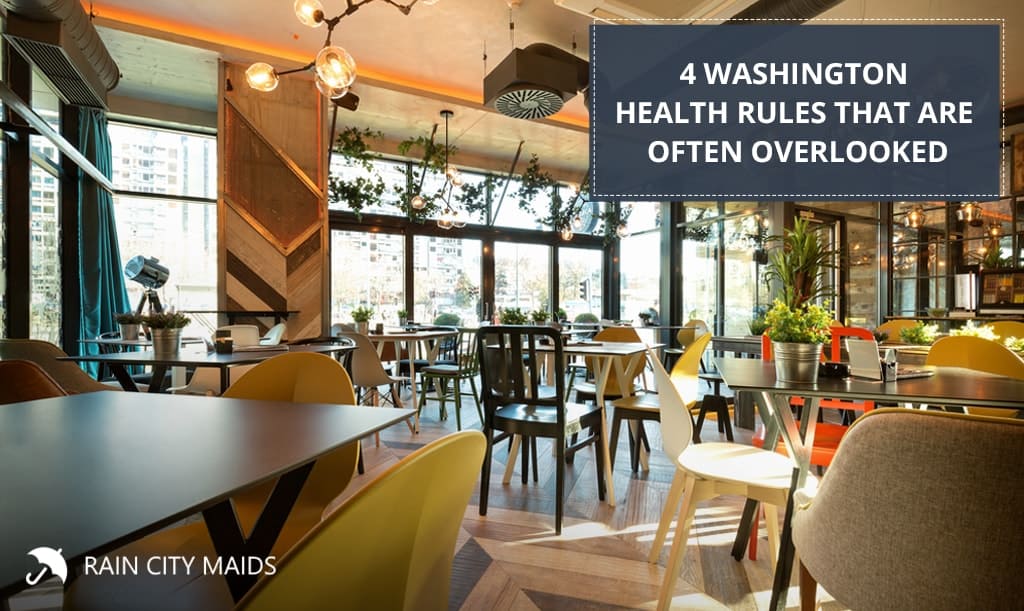Running a business carries a lot of responsibility, and it’s better to be informed of what your obligations are rather than paying the price later in case you incur in a violation. As a food-related business owner, you are probably familiar with these, but if you’re just starting out or need a little refreshment, this list of sanitary standard operating procedures should be a welcome reminder of what to do and what not to do.
You will quickly realize that, although cleaning a house can be a big chore, keeping a business clean is even more time-consuming and labor-intensive. You will probably need a professional team to help you once in a while, considering that we’re only scratching the surface here! Without further ado, here are four often-overlooked items from the Washington health code that all food establishments must follow!
Light intensity
Believe it or not, the light intensity of an establishment is part of the Food Code in the state of Washington. According to the USDA Food Safety and Inspection Service, the light should be of good quality and sufficient intensity so that employees can properly clean the place and keep the food from being contaminated. This also allows FSIS personnel to verify these conditions.
The code states that the light intensity should be at least 110 lux (10 foot-candles) at 30 inches above the floor in walk-in fridges or wherever dry food is stored. In places where self-service food is provided (like buffets), the light should be 220 lux (20 foot-candles), as well as in areas used for handwashing, utensil storage, and bathrooms. Finally, it should be the brightest, 540 lux (50 foot-candles) where employees are preparing the food or working with utensils that require safety.
Handling pets
It turns out that, contrary to popular belief, there can be animals inside your food business, provided that they fall under specific categories. Service animals are allowed in areas where food is served, provided that they’re being handled and restrained by their owner and that no employee of the restaurant touches it. Other exceptions include edible or decorative fish in display tanks, police dogs, and sentry dogs. The latter applies only if the area is cleaned up before the next service arrives, and if there is effective partitioning and self-closing doors separating the dining areas from the food storage and preparation areas.
Heavy equipment
There are two kinds of fixed equipment according to the Washington State Retail Food Code: Equipment that is fixed to the floor because it’s not easy to move, and table-mounted equipment that is also not easily moved. The first should be installed in any of the following ways:
- So that it allows enough space for thorough cleanings over, around, and under it at any time.
- Spaced from walls, ceilings, or adjoining equipment at a distance of no more than one thirty-second inch (1 mm).
- Sealed to the adjoining walls or other equipment if it is exposed to spilling and seepage.
On the other hand, if you have a table-mounted piece of equipment, then it must be installed in a way that allows for the cleaning of itself and the area beneath it by being sealed or elevated on legs. You can be sure that a health inspector will take notice of any large equipment that does not follow these rules, so put some muscle into moving them soon if yours aren’t!
Ease of cleaning
Style is vital in a restaurant, but there are some limitations that we must thread if we want to keep its doors open. Again, this one comes from the Washington State Retail Food Code, and it says floors and walls in food preparation areas should be flat, smooth, and closely assembled together so that no grime or dirt gets stuck between pieces of material. Non-absorbent materials are obligatory for areas that are subject to constant moisture, such as food preparation and utensil cleaning areas. Finally, no shaggy carpets! All carpets have to be carefully woven and easily cleanable.
If you’re talking about an outdoor eating space, however, then the floor has to be concrete, machine-laid asphalt, or gravel to minimize dust and mud. There is also a list of approved materials to cover floors and walls if you don’t want to be limited to the ones mentioned above. All of these have to be continuously sanitized.
As you can see, things can get pretty specific! But it’s essential that your business has sanitary compliance since you are providing people with food every day, and that’s a big responsibility. We want your business to be the absolute best it can be, so dive into the different codes that you must follow and go get them!
